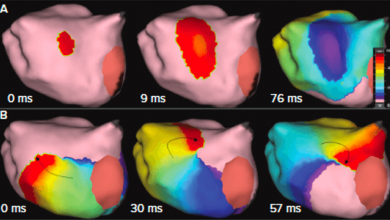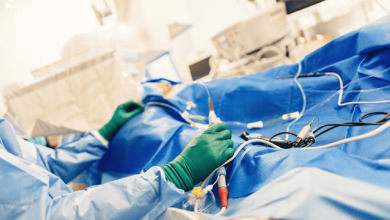Search results
Author(s):
Caroline H Roney
,
Andrew L Wit
,
Nicholas S Peters
Added:
3 years ago
Determining optimal treatment strategies for complex arrhythmogenesis in AF is confounded by the lack of consensus on the mechanisms causing AF. Fundamental to defining arrhythmogenic mechanisms of AF are the distinctions and interplay between functional features (determined by the electrophysiology of a cell) and structural features (determined by whether a structural or anatomical feature is…
View more
Author(s):
Seigo Yamashita
,
Ashok J Shah
,
Saagar Mahida
,
et al
Added:
3 years ago
Catheter ablation therapy has been widely used for rhythm control in patients with atrial fibrillation(AF).1 Since the first report in 1994,2 several interventional techniques have been proposed for AF, including replication of the surgical Maze,2 targeting pulmonary vein (PV) foci,3 segmental ostial and circumferential PV isolation,4,5 ganglionated plexi ablation,6 linear lesions in the left…
View more
Author(s):
Manav Sohal
,
Rajin Choudhury
,
Philippe Taghji
,
et al
Added:
3 years ago
Ablative therapies for atrial fibrillation have gained popularity worldwide and prompted the development of new, and often complex, tools to achieve higher levels of success. Pulmonary vein (PV) isolation is widely considered as the cornerstone of successful catheter ablation based on seminal work by Haissaguerre et al.1 Successful isolation of the PVs is now the most commonly sought endpoint in…
View more
Author(s):
Amir A Schricker
,
Junaid Zaman
,
Sanjiv M Narayan
Added:
3 years ago
Catheter ablation is more effective than pharmacological therapy for the secondary prevention of patients with paroxysmal1,2 and persistent3,4 atrial fibrillation (AF) and has an emerging role in the primary prevention of paroxysmal AF.5,6 Nevertheless, in randomised clinical trials (RCTs) its success in treating patients with paroxysmal AF is 40–60% for a single procedure and 70% for multiple…
View more
Author(s):
Michael Timothy Brian Pope
,
Timothy Rider Betts
Added:
1 year ago
Author(s):
Junaid Zaman
,
Andrew Grace
,
Sanjiv M Narayan
Added:
1 year ago
AI in AF
Author(s):
David M Harmon
,
Ojasav Sehrawat
,
Maren Maanja
,
et al
Added:
1 year ago
Article
Body Surface Electrocardiographic Mapping for Non-invasive Identification of Arrhythmic Sources
Author(s):
Ashok J Shah
,
Meleze Hocini
,
Patrizio Pascale
,
et al
Added:
3 years ago
Article
Drivers of Atrial Fibrillation
Author(s):
Ian Mann
,
Belinda Sandler
,
Nick WF Linton
,
et al
Added:
3 years ago
Article
Author(s):
David DeLurgio
,
Jaswinder Gill
,
Syed Ahsan
,
et al
Added:
2 years ago















